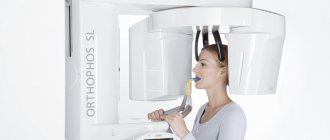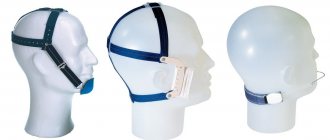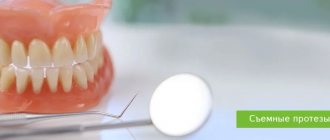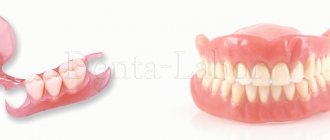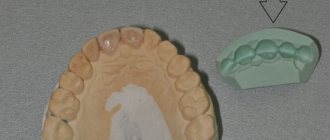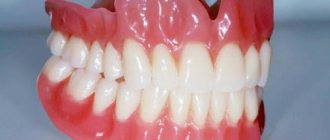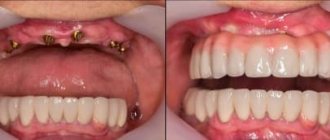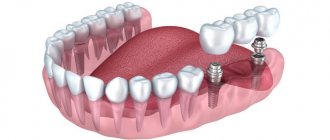The absence of teeth in the mouth is a serious problem for a person, and it needs to be solved as quickly as possible, because with a toothless jaw it is not only impossible to smile and speak openly and without embarrassment. Complete edentia entails impaired diction and does not allow high-quality chewing of food, which is fraught with the development of diseases of the digestive system of the body. To solve the problem, modern dentistry is ready to offer the patient various prosthetic options, including the installation of a conditionally removable denture on implants.
What are conditionally removable dentures on implants, what is the difference between conditionally removable and removable dentures, what benefits can a patient receive by choosing this prosthetic option? We will give a detailed answer to all these questions below.
Conditionally removable prosthesis on implants: description and features
Conditionally removable dentures are a special type of orthopedic structures used in dental prosthetics. Prostheses of this type are an alternative to traditional removable and fixed dentures.
Conditionally removable dentures on implants differ from classical fixed structures at a significantly lower cost, because for their reliable and most durable fixation in the oral cavity, a significantly smaller number of implants are required, even if the problem of a complete absence of teeth in a row has to be solved.
Conditionally removable structures on implants will differ from removable dentures in terms of higher strength, reliability of fixation and comfort in use. The possibility of using such materials as ceramics and zirconium in conditionally removable prosthetics on implants makes it possible to obtain an aesthetic result: ceramic and zirconium dentures look natural, which cannot be said about artificial teeth made of plastic. Conditionally removable structures on implants will differ from removable dentures in terms of higher strength, reliability of fixation and comfort in use.
The possibility of using such materials as ceramics and zirconium in conditionally removable prosthetics on implants makes it possible to obtain an aesthetic result: ceramic and zirconium dentures look natural, which cannot be said about artificial teeth made of plastic.
Conditionally removable dentures on implants got their name because of the peculiarities of fixation: they are attached to pre-implanted artificial roots (implants) and a person cannot remove them independently. But if necessary, their removal can be easily carried out by a specialist in a clinical setting. Conditionally removable dentures on implants will have to be removed from time to time for professional cleaning of the orthodontic structure, which will extend the useful life of the product and maintain its aesthetic appearance.
Indications, types of structures used in conditionally removable prosthetics on implants
Conditionally removable dentures on implants are most often used in cases of complete absence of teeth in the patient, with multiple edentia. Also, conditionally removable structures on implants can be installed when, for a number of reasons, it is impossible for the patient to receive classic fixed dentures. Conditionally removable prosthetics on implants will be the optimal method for restoring lost teeth for patients who do not want to use removable dentures that are fragile and inconvenient to use.
The procedure for conditionally removable prosthetics on implants uses plate-type orthodontic products having the following structural design:
The base is artificial gum made from a polymer mass;
Crowns - artificial teeth - are placed on the plastic gum;
If a clasp prosthesis is used in conditionally removable prosthetics, then at the base of the product there will be a clasp - a strong metal arch.
Lamellar dentures can be fixed in the oral cavity without prior implantation - using special hooks that are attached to the supporting teeth. With a completely toothless jaw, this method of fixation is excluded, as is the use of clasp dentures - to ensure a stable position of the prosthesis in the mouth, supporting, living and healthy teeth are required. But both structures can be secured to implants. This will allow you to obtain high aesthetics and durability of prosthetic results.
How does the procedure work?
Attachment of microprostheses occurs as follows:
- metal paws in the teeth, localizing the defect. Form grooves where the prosthesis is attached;
- special cement. The micromodule is fixed on adjacent incisors using a solution that is polymized under the influence of ultraviolet radiation and chemically;
- micro locks. The matrices are attached to adjacent teeth or crowns standing on them.
The last two methods make structures invisible to humans and others.
The main stages of conditionally removable prosthetics on implants
Conditionally removable prosthetics on implants is carried out in several main stages, and below we will analyze in detail the features of each stage of treatment.
Diagnosis and treatment
During the patient’s initial visit to the dental clinic, a thorough examination of the oral cavity is required and a number of diagnostic measures are prescribed. Diagnostics is of fundamental importance: it allows us to exclude possible contraindications to conditionally removable prosthetics on implants. If during preparation for the procedure gum inflammation or other dental diseases are detected, therapeutic measures must be taken to eliminate them before prosthetics on implants.
Implantation
The procedure for implantation before installing a conditionally removable prosthesis can be carried out according to the protocol of classical or simultaneous implantation. The second option is more gentle for the patient and also allows you to significantly reduce the overall treatment time. The implants are implanted into the sockets of the extracted teeth, and almost immediately a temporary prosthesis is placed on them, which is replaced with a permanent structure within two to three weeks. However, if the teeth were lost a long time ago, and the bone tissue has lost its height and volume, it is not possible to carry out express implantation. Classical implantation is carried out in two stages, and a permanent prosthesis will be installed only after the artificial roots have completely engrafted; usually the duration of the osseointegration process of implants is several months.
Manufacturing and installation of a permanent prosthesis
After installing the implants and temporary prosthesis, impressions are taken, on the basis of which a conditionally removable prosthesis will be made. The price of a permanent prosthesis will depend on its type, material of manufacture and method of fixation. We will examine in detail the possible options for fixing conditionally removable dentures on implants in the next section of the article.
Bone grafting for jaw implantation
The more implants are installed, the greater the likelihood that the existing bone tissue will not be enough to install implants and it will be necessary to build it up. Bone deficiency can be in thickness (very thin bone) or in height (close to the maxillary sinuses in the upper jaw, nerve in the lower jaw).
If there is a slight lack of bone tissue in thickness, one-step bone grafting with the installation of implants is possible. It is also possible to carry out a sinus lift (a type of bone tissue augmentation when the distance to the maxillary sinus is insufficient) with the one-step installation of implants.
If there is a large deficiency of bone tissue, operations are first performed to build it up (open sinus lift, harvesting and replanting of a bone block), and after 3-6 months, implantation is performed. In this case, the total duration of treatment can be from one to one and a half years.
Fixation options
Conditionally removable dentures can be fixed to implants in different ways. Two main methods for reliable connection of a prosthesis with implanted implants have been developed and are actively used - beam and spherical.
Beam fixation
The technique is recognized by experts as the most reliable and durable. Its essence lies in the fact that all implanted implants are connected to each other by a special metal beam that has recesses for fixing the prosthesis. This fixation technology provides another advantage - it allows you to reduce the number of implants. The metal beam will ensure their reliable fixation in the bone tissue and at the same time ensure uniform distribution of the load on the bone from the installed prosthesis.
Ball-shaped fixation
In this method of securing a conditionally removable denture, the implants are not connected to each other. The prosthesis itself is placed on a spherical abutment and secured with specialized miniature locks. This type of fixation of conditionally removable dentures is considered less reliable, but can reduce treatment costs - installing dentures with beam fixation on implants is more expensive.
All-on-4
The All-on-4 technique (all-on-four) was developed by Nobel Biocare. It involves the installation of 4 implants on one jaw with simultaneous loading with a fixed prosthesis on a screw fixation. The 2 outermost implants are placed at an angle of up to 45 degrees, which allows you to bypass anatomically difficult places: the maxillary sinuses in the upper jaw and the nerve exit site in the lower jaw.
Initially, the All-on-4 technique was positioned as minimally invasive, without bone grafting. However, for successful functioning it is necessary to install sufficiently long implants, because 4 implants must bear the load of the entire dentition. Unfortunately, not all patients have the required alveolar ridge height. Installing shorter implants may result in one of the implants not taking root due to increased load. And then everything-on-four will turn into nothing-on-three. This is why patients are offered “all-on-4 modifications”, for example All-on-6 (all-on-six implants), because Installing an additional 2 implants significantly reduces the risks.
3-6 months after implantation using the All-on-4 method, gaps appear between the prosthesis and the gum, because This is why gum remodeling occurs after implantation. It is necessary to either reline the existing prosthesis or replace it with a permanent one - metal-ceramic or zirconium.
Advantages and disadvantages
Conditionally removable prosthetics on implants is a technique that allows you to obtain the following advantages when restoring lost teeth:
Comfort during use. Adaptation to the prosthesis is quick and is not accompanied by diction problems; the prosthesis does not fall out of the mouth when talking or eating;
All fastening elements are located inside the prosthetic product and are therefore completely invisible in the oral cavity;
The conditionally removable prosthesis itself has compact dimensions;
Injury to the soft tissues of the mouth is excluded;
Correction of prostheses is necessary only during the period of osseointegration of implants;
Long useful life of prostheses. Conditionally removable products last twice as long as removable structures, as they are more resistant to external factors and mechanical load;
Conditionally removable structures do not require complex and specific maintenance. They do not have to be regularly removed from the mouth and stored in a special container. From time to time you will visit the dentist, where your dentures will be professionally cleaned.
The only disadvantage of conditionally removable prosthetics is the higher cost, as well as the presence of a plastic base in the design. A base made of polymer material can cause an allergic reaction, but modern conditionally removable dentures on implants use hypoallergenic materials that do not cause irritation to sensitive mucous membranes.
What are they made of?
Most often, the frame of such prostheses is made of plastic, nylon or acrylic, but today the implant must meet the highest quality standards, look believable, and also be made of hypoallergenic materials.
Metal ceramics
Popular due to:
- affordable price;
- having simple maintainability;
- long-term fixation (with proper manufacturing and care, 10-15 years);
- high strength;
- good looking;
- absence of allergic reactions.
Dentists recommend installing a metal-ceramic prosthesis in the following cases:
- violation of the shape of the dentition;
- change of enamel color;
- allergic reaction to the composition of the product;
- the absence of one molar in the chewing zone (molars are the sixth, seventh and eighth teeth of the permanent row or the fourth and fifth teeth of the deciduous row on the left and right sides of the jaw);
- increased abrasion.
Metal-plastic
These dentures are made from a metal frame and plastic crowns. They have already lost their relevance. In dental centers, this type of prosthetics is only for testing, for a short time (3 years). Doctors recommend installing this if you are missing one or more teeth, increased sensitivity and abrasion of tooth enamel.
Advantages of metal-plastics:
- quick installation;
- The design practically does not injure the mucous membranes.
Flaws:
- It is difficult to match the color of plastic so that it is similar to the color of enamel;
- If used on an ongoing basis, periodontal disease and caries may develop;
- Short service life;
- Plastic elements can cause an allergic reaction.
